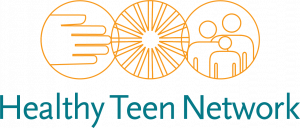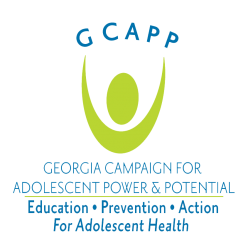This interactive workshop will allow participants to increase their comfort and knowledge about age-appropriate sexual development in young children and learn the skills they need to effectively implement lesson plans in their districts. The importance of partnering with parents and school administrators to build support for family life education for young children will be addressed. This workshop can be tailored to meet the specific needs of your group, school or agency. All content is aligned to the National Sexuality Education Standards, the National Teacher Preparation Standards for Sexuality Education, and the Professional Learning Standards for Sex Education.
Training Hub
The Sex Education Collaborative Training Hub lists trainings for sex educators, facilitators, and other professionals on best practices for sharing important information with clients and the public. From teaching anatomy inclusively to effectively addressing bias in the classroom to addressing racial justice and equity in sex education, the Training Hub includes trainings, technical assistance, and policy support from state, regional, and national leaders in the field of sex education.
Please note: The Training Hub includes both in-person and online professional trainings. If you see a training you are interested in and it isn’t listed as virtual, please reach out directly to any of our members to find out what's possible!
Trainings Offered by State-Based and National Organizations
Displaying results 61 - 65 of 137It's Elementary: Family Life Lesson Plans for Grades K-3
- Indicator 3 (K-12): Explain the differences between positive vs. shaming approaches to teaching sex education.
- Indicator 6 (K-12): Describe three strategies for actively involving parents, caregivers, and other trusted adults in a sex education program.
- Indicator 1 (K-12): Explain three reasons why it is important to respond to every question students ask when teaching sex education.
- Indicator 2 (K-12): Demonstrate the ability to effectively respond to three different types of challenging questions. (S)
- Indicator 4 (K-12): Demonstrate the ability to respond effectively to students’ values-based comments and questions. (S)
Virtual PD - Building Rapport With Students When Teaching Sex Education
Virtual Professional Development is a simulated classroom where teachers can practice teaching student avatars using short scenarios and support from an instructional coach, so they can quickly learn and master the skills they most need to be effective. With upper elementary, middle and high school classrooms, Virtual PD has scenarios for teachers of all grade levels across a wide range of topics aligned with the Professional Learning Standards for Sex Education (PLSSE). You can watch the video here (link is external) to learn more about Virtual PD.
Using the Virtual Professional Development classroom simulator, the educator will practice Building Rapport With Students When Teaching Sex Education with the student avatars. In this scenario, the educator will teach a lesson on relationships as they try and build a rapport with a relatively new class. After engaging students in a self-reflection activity with prepared questions, they ask students to turn & talk with a partner to share their responses. They then facilitate a share out among the whole class. In this simulation with five students, the participant will need to demonstrate the ability to build rapport with students and intervene in homophobic and other bullying comments and actions when they arise.
- Indicator 1 (K-12): Demonstrate the ability to build rapport with students. (S)
Sexual & Reproductive Health 101
New to teaching sexual and reproductive health education? Need a refresher? This highly interactive training prepares participants to teach sexual and reproductive health topics to youth. Participants discover new ways to engage youth in learning about anatomy, physiology, contraception and sexually transmitted infections. They also explore how values influence teaching of sensitive topics and practice answering common student questions. Facilitators also work with participants to help them understand local and state sexual health education policies and strengthen their role as a critical resource for youth.
Objectives of this course:
- Describe protective and risk factors, including stigma, associated with adolescent pregnancy and sexually transmitted infections.
- Describe youth-friendly resources related to adolescent sexual and reproductive health.
- Communicate useful and relevant content about anatomy, physiology, contraception and sexually transmitted infections.
- Apply a variety of strategies and activities for teaching sexual and reproductive health.
- Address how values and attitudes affect teaching sexual and reproductive health.
- Implement action steps to engage with the school and community to deliver high quality sexual and reproductive education.
Visit ETR's Training & TA Form to submit your request and receive cost information.
- Indicator 1 (6-12): Explain fertilization, implantation, conception, and how pregnancy occurs.
- Indicator 2 (6-12): Demonstrate the steps necessary for effective external and internal condom use and how to access condoms. (S)
- Indicator 3 (6-12): Describe the differences in mechanisms of action and access between emergency contraception and the abortion pill.
- Indicator 4 (6-12): Explain methods of contraception, including the latest medical advances that are popular among young people.
- Indicator 5 (6-12): Describe pregnancy options, including parenting, adoption, and abortion.
- Indicator 5 (K-12): Describe three effective strategies for practicing skills with students.
- Indicator 1 (6-12): Describe HIV and three common STDs/STIs, and how each can and cannot be transmitted.
- Indicator 2 (6-12): Explain that many STD/STIs do not cause symptoms and the only way to know if you have one is to be tested.
- Indicator 6 (6-12): Describe the latest medical advances in HIV and other STDs/STIs prevention and treatment.
- Indicator 1 (K-12): Describe three health (e.g. physical, social and/or emotional) and/or academic benefits of sex education for young people
Healthy Teen Network customizes techincal assistance and support to meet your unique needs.
Areas of expertise span a wide range of topics across adolescent sexual and reproductive health, evidence-based approaches, curricula, working with diverse youth, training adult professionals, innovation and research, human-centered design, advocacy and public policy, strategic planning, sustainability, and more.
Working Effectively with Adolescents
This workshop will help sex education instructors use research on adolescent social, cognitive, and biological development to improve the way they communicate with adolescents. Participants will learn techniques for engaging with adolescents and building buy-in to messages about behavior.
- Indicator 1 (K-12): Demonstrate three techniques to create an inclusive and affirming learning environment. (S)
- Indicator 1 (K-12): Demonstrate the ability to build rapport with students. (S)
- Indicator 3 (K-12): Explain the differences between positive vs. shaming approaches to teaching sex education.
- Indicator 6 (K-12): Describe three strategies for actively involving parents, caregivers, and other trusted adults in a sex education program.
- Indicator 2 (K-12): List three physical, three social, and three emotional changes that occur during puberty.
- Indicator 1 (K-12): Explain three reasons why it is important to respond to every question students ask when teaching sex education.
- Indicator 2 (K-12): Demonstrate the ability to effectively respond to three different types of challenging questions. (S)
Additional Trainings offered by out-of-state organizations
- ‹ previous
- 35 of 49
- next ›
Reproductive Resources for Students
Youth-friendly reproductive resources are important to ensure young people will seek the help and information they need. We will discuss the components of youth-friendly resources, as well as highlight websites, social media pages, phone numbers, local clinics, and apps, including GCAPP’s TMI-Georgia. TMI-Georgia was created by young people for young people to have access in meeting their sexual and reproductive health needs.
- Indicator 6 (6-12): Identify three federal and/or state laws that impact young peoples’ access to effective reproductive and sexual health care (e.g. age of consent for services, confidential access to health care services, and access to condoms)
- Indicator 7 (6-12): Identify three medically accurate and youth-friendly resources for STD/STI and HIV prevention, testing, and treatment
- Indicator 7 (K-12): Identify three credible, medically accurate, youth-friendly resources that can provide information or support related to transgender and gender expansive people.




